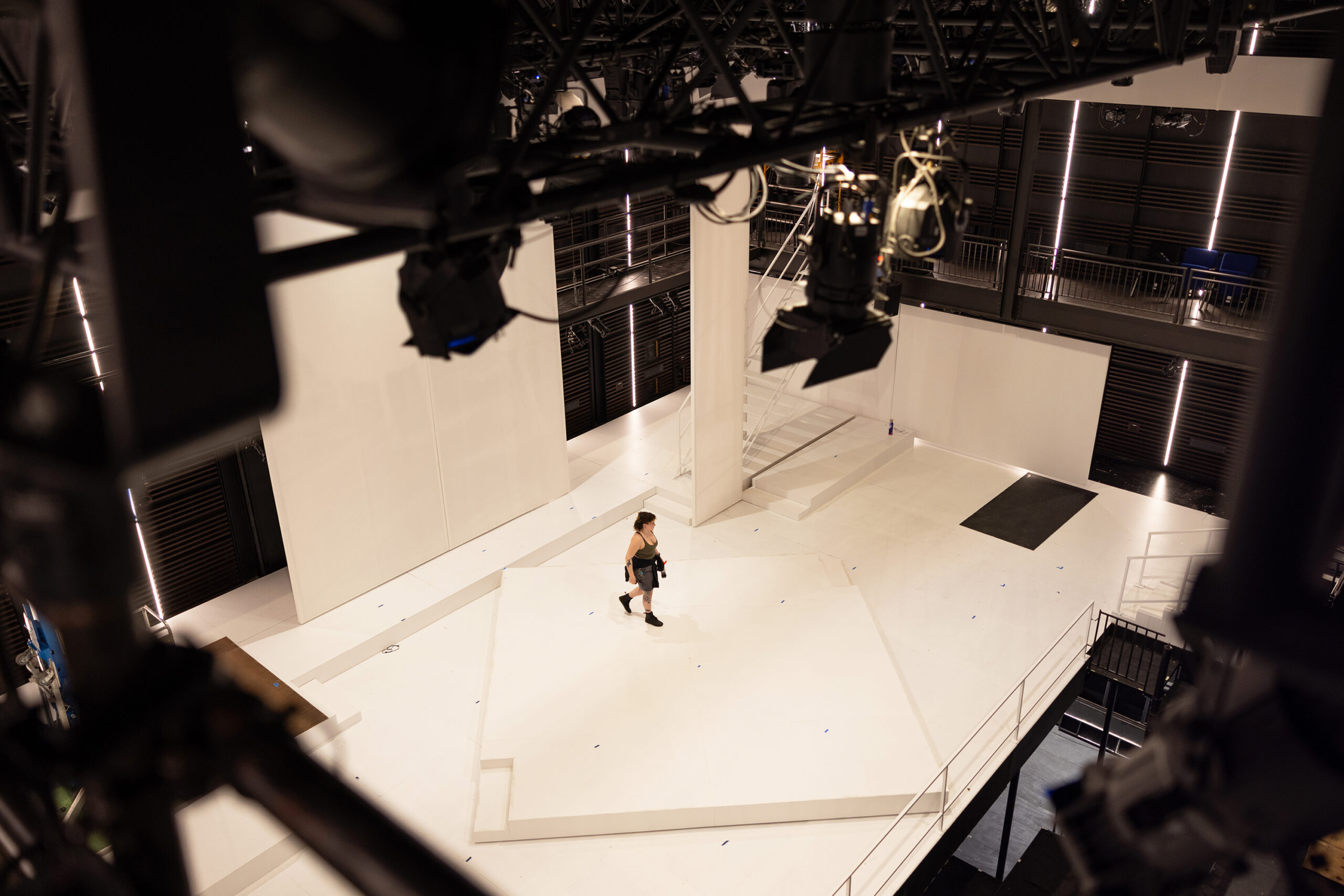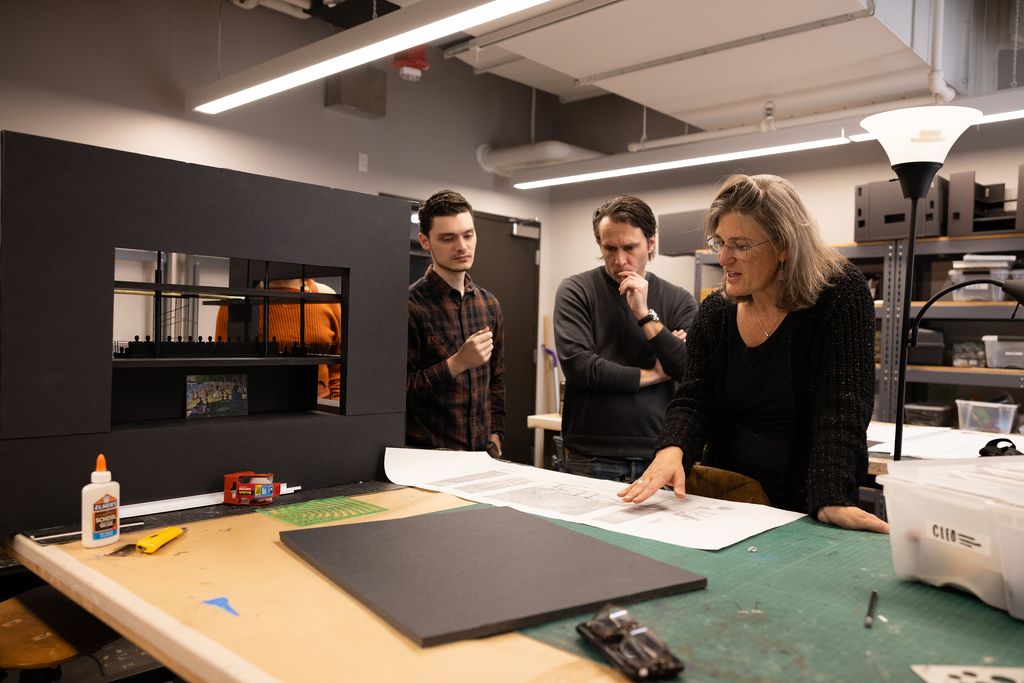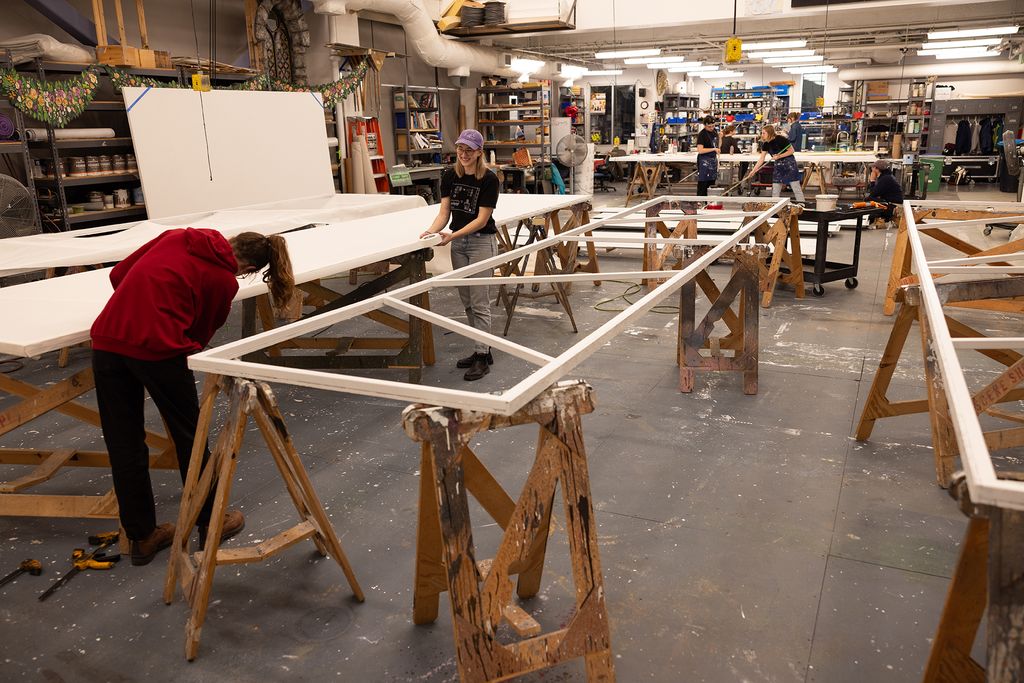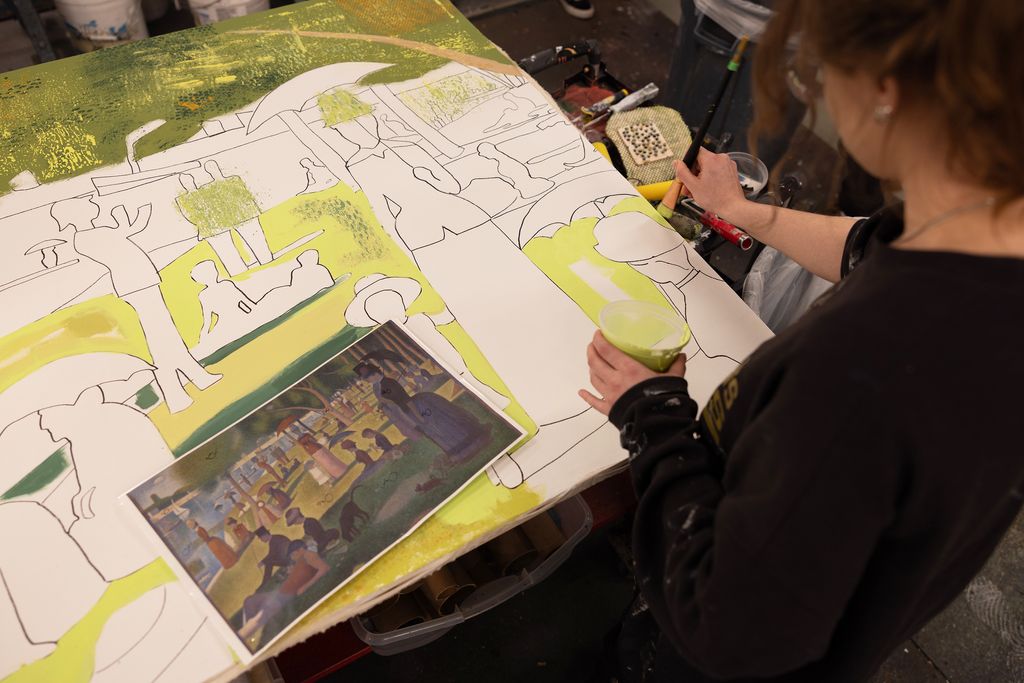Sunday in the Booth with George
CFA reimagines a hit musical

Technical production students engineered a 16-by-16-foot turntable that actors stood on throughout CFA’s productions of Sunday in the Park with George this past spring. “We could decide how fast we wanted it to rotate, how many rotations were needed during a song, and when it needed to stop for a moment of stillness,” says scenic designer Cristina Todesco (’94,’05,’09). “It was a tool in choreographing many scenes and many moments.” Photos by Michael D. Spencer
Sunday in the Booth with George
CFA reimagines a hit musical
The musical Sunday in the Park with George is inspired by the famous 19th-century pointillist painting A Sunday Afternoon on the Island of La Grande Jatte by Georges Seurat. The work, which depicts people at a park near Paris, is rendered entirely in hundreds of thousands of tiny technicolor dots and brushstrokes. Productions of the Pulitzer Prize– and Tony Award–winning show by James Lapine and Stephen Sondheim typically have sets that mimic Seurat’s colorful painting.
But for the CFA performances of Sunday in the Park at the Joan & Edgar Booth Theatre this past spring, director Clay Hopper (’05) and scenic designer Cristina Todesco (’94,’09) took a very different approach—one specifically adapted to the Booth’s black box theater.

“We have a pretty unique space at the Booth,” says Todesco. “It’s very flexible in terms of how the audience can be arranged and how the audience experiences the story.”
Most productions of the musical have been performed in end stage or proscenium theaters, where an audience faces the stage in one direction. “That’s because this is a play that is [referencing] a painting, which is a flat, 2-D form of art,” Todesco adds. “But theater itself is not that. It’s alive. It breathes. It moves. It’s fluid. So, it was really important for us to embrace what this three-dimensional box could give us for this production.”

That meant eschewing the convention of recreating Seurat’s painting as a backdrop for part of the show. “It seems like a convention that people accept very readily because it’s such a gorgeous painting,” Todesco says. “We wanted to free ourselves of that.”
Instead, she presented a recreation of the painting in the theater’s lobby. “People could get their dose of it. And then, during intermission, they could come back and look at it again, with what they acquired after having watched act one.”

The musical follows fictionalized versions of Seurat in act one and of his great-grandson in act two. Todesco was intrigued by Seurat’s process of creating the painting and wanted to portray that in a unique way in the CFA production.
“I’ve always found his sketches to be very evocative and to have a tremendous amount of depth, air, and weight,” she says. “His drawings don’t have color, so there’s a certain simplicity, a clarity, that speaks to me. There’s a looseness to the sketches that I really appreciate.”


Left: It took two scenic artists 160 hours to recreate Seurat’s painting, which was displayed in the lobby. Right: To create the panels with Seurat’s sketches, scenic art students painted the images on plastic screens to mimic the effects of his drawings. “His drawings have the texture of the watercolor paper he used, which usually has a raised grain pattern,” says Todesco. “The screens let us achieve that kind of softness. Then, we had a layer of muslin, a kind of lighter-weight canvas, on top of that, and then we had blackout fabric on the back of the plastic screen.”
For the set, Todesco and Hopper used white walls and dramatically colored lighting to bring characters to life. Todesco says her goal was to capture the feeling of “stepping inside the canvas before the paint happens.” To show Seurat’s process, Todesco reproduced the artist’s sketches on large panels set on tracks. “These panels moved as the subject comes into more clarity for George as he’s working through all the elements of design—harmony, balance, line, color, light, all of that stuff,” Todesco says. “So, we shifted these panels, and at the end of act one we revealed the sketch of the painting. That was our approach—to see this play in a new way.”
